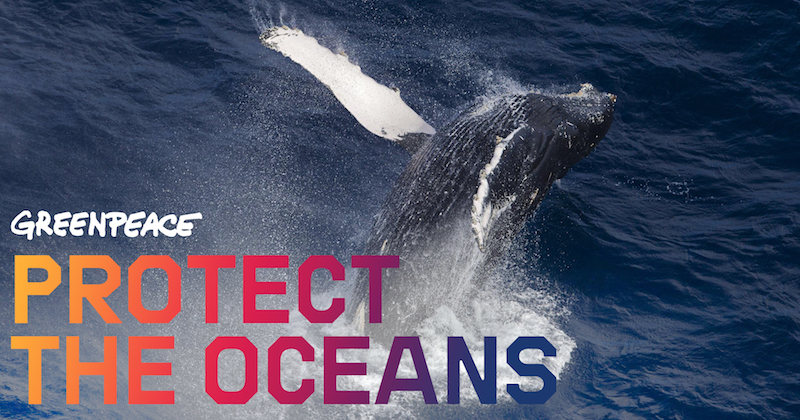Derrière l’expression « haute mer » se cache un monde imaginaire pour la plupart d’entre nous. Réservée aux navigateurs aventuriers, capitaines au long cours, aux pêcheurs hauturiers, aux scientifiques et océanographes, aux marins militaires,….la Haute Mer est plus un concept qu’un lieu de vie pour le commun des mortels. Et pourtant, c’est en Haute Mer que la plupart des interactions Océan-Atmosphère se jouent: représentant 43% de la surface de la terre, la Haute Mer recèle des trésors de biodiversité qui permettent à l’atmosphère d’être viable.
Les menaces
Ces zones longtemps protégées des agressions humaines car inaccessibles, sont maintenant en danger par la sur-pêche, l’augmentation de la température des Océans, les pollutions plastique, chimique et sonore. Pour ne parler que du CO2, la Haute Mer a piégé 25% du carbone produit par les hommes durant les 20 dernières années. L’Océan stocke 10 fois plus de carbone que la végétation. Ces échanges de carbone entre l’Océan et l’Atmosphère ont lieu soit directement à la surface (vagues, tempêtes,…) soit indirectement grâce à la biodiversité sous-marine (plancton et autres poissons) présents à toutes les profondeurs, y compris dans les plaines abyssales.
Ces zones de Haute Mer sont menacées par 5 facteurs:
- La surpêche: des bateaux, des technologies et des méthodes de plus en plus performants augmentent les volumes de pêche. Si la Haute Mer ne fournit qu’un peu plus de 10% de l’ensemble des captures mondiales, cette pêche génère un stress important sur certaines espèces, comme les thonidés ou les cétacés.
- L’exploitation minière: connue à travers l’engouement pour la récolte des nodules poly-métalliques, ce type d’exploitation met en danger les eco-systèmes qui se développement le long des monts et des volcans sous-marins, comme celui de « lost city« . Les dangers de ce type d’exploitation sont la destruction d’habitats, la libération de toxines, la pollution chimique et sonore…
- La Bioprospection: il s’agit de récolter des ressources naturelles pour les besoins de certaines industries, comme la cosmétique ou l’alimentation.
- Le changement climatique: l’Océan absorbe autant de CO2 que l’ensemble des végétaux. Cela peut paraitre une bonne nouvelle, mais en réalité, cette concentration en carbonate change la composition chimique des Océans, qui deviennent plus acide et voient aussi leurs zones à faible taux d’oxygène augmenter de taille.
- Pollutions chimique, sonore et plastiques: bien documentées, ces pollutions sont dramatiques pour la survie de certaines espèces marines.

Pour protéger la Haute Mer, les Nations Unies ont lancé des négociations avec les états pour mettre en place un traité international contraignant pour la protection des zones maritimes internationales. Pour la première fois, des scientifiques ont rédigé un rapport qui prone la mise en place d’un réseau de parc marins, ou réserves marines, pour protéger leur biodiversité. A l’image des ponts écologiques sur nos autoroutes, ce réseau permettrait la libre circulation des espèces marines dans des couloirs marins.
L’intérêt de la démarche de Greenpeace est la prise en compte de la nécessité de poursuivre l’exploitation des Océans mais en accentuant les méthodes d’observation pour leur impact sur la biodiversité au sein des Océans, assez peu connue à ce stade. Les critères de création des ces parcs marins sont de nature océanographiques (température, courants,…), biophysiques (monts sous-marins, cheminées thermales, complexité des fonds,…), biologiques (population de certaines espèces, raies, requins, thons,…) et biogéographiques (plaines abyssales, proximité plateau continental,…). Un logiciel qui fait référence dans le domaine de la protection de l’environnement, Marxan, a permis, sur la base de ces critères, d’établir des sites de haute mer stratégiques.

Le réseau de réserves marines
La plupart de ces sites ne sont pas indépendants entre eux, en particulier à travers la migration des mammifères marins. Il a fallu les interconnecter entre eux pour assurer leur intégrité et leur persistance, tout en préservant au maximum les zones d’exploitation économiques. Ce résultat impose un déplacement de 22% seulement des zones de pêche actuelles.
Nous pouvons aider l’ONU à être plus fort face aux Etats et réussir à mettre en place ces réserves marines de haute mer. Greenpeace nous propose de signer une pétition pour aider ce projet à aboutir.







Comments are closed